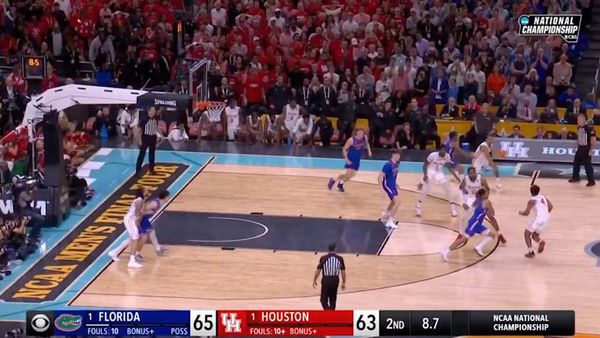
The popular image of auditions today is defined by the cruelty and cringe of reality TV. “People expect Nicole Scherzinger saying, ‘You’ve made it to judges’ houses!’ and Rylan crying,” says freelance casting director Jatinder Chera, one sceptical eyebrow raised. In the media, heartless rejection and impossible dreams seem to be the currency of castings. “But there’s a lot more to it than people really know.”
So casting directors get a bad rap. They’re seen as gatekeepers, rejectors and ghosters. When Bryony Jarvis-Taylor, deputy head of casting for the National Theatre, mentions her job to someone new, she will often get asked if it’s fun to be so mean. “That could not be further from what I try to do!”
Their job is to find the best people for a show. “If a show was a painting,” suggests Chera, “we would do the initial sketch.” He recently cast James Fritz’s kaleidoscopic period drama The Flea at the Yard in London and The Comeuppance by Branden Jacobs-Jenkins at the Almeida. Finding the right person for a role is an art not a science; a task combining gut, head and heart. “It’s this unexpected moment,” says Chera, “when there’s just something about their quality on stage that’s so interesting and attractive.” The great joy of the job, says Jarvis-Taylor, is that “very rarely is someone wrong for a role”. She likens it to parallel universes: “It’s just a different version of a character in a different version of the play.”
When a theatre casting director first reads a script, they will compile an initial list of actors’ names for each part. And they will get similar lists from the director, producer and sometimes writer, which are added to a master list. Then the casting brief, which describes the role and its requirements, is listed on Spotlight. This is “like LinkedIn for actors,” Chera says – a database where agents can see which roles are up for audition and submit their actors. “A casting director can also post an open call,” he explains, which “opens the pool to untrained actors, or unrepresented actors, who may miss the opportunity via the more traditional routes.” In the audition room, the actor will be performing for the play’s director, the casting director and perhaps the writer.
Increasingly, casting is being recognised as an essential creative art in its own right. The Black British theatre awards were among the first to recognise the role with a prize – and it has also been announced as a new category for the Oscars. “It’s an amazing step for us as casting directors,” says Heather Basten, who runs her own casting agency and was behind the casting for Tyrell Williams’s exquisite football drama Red Pitch.
So how does Basten know when she has alighted on the right person? “There are a lot of moving parts before we can get to that moment of gut instinct,” she cautions. “We draw on years of knowledge and experience: who we’ve met, the actors on our radar, the established names and the talent we’re trying to break into the industry.” She considers the moments when it clicks. “When you see the truth in front of you,” she shrugs, “you just know that’s the person. Then it’s our job to create a strong pitch for that person” – to the director or producer, who will often have the final say.
For Red Pitch, a show about loyalty and brotherhood, it was critical that the three leads gelled. Basten ran a series of workshops at which potential performers were mixed and matched until the perfect trio was found. “We landed with three great actors who are now very close,” says Basten, who chose Kedar Williams-Stirling, Emeka Sesay and Francis Lovehall. “I think you can sense that the chemistry is real.”
When it comes to star casting, the decision-making might sit more centrally with a director or producer. While some stars come pre-attached to shows, that wasn’t the case for Elton John’s new musical adaptation of The Devil Wears Prada, in which Vanessa Williams will take the leading role of Miranda Priestly. “We all had long Miranda lists,” says Jill Green, the prolific casting director behind musicals including The Lion King, Kinky Boots and Jersey Boys, “but then Jerry phoned.” Jerry Mitchell, the show’s Tony-winning director, had spoken to Williams, who was interested. “That was very exciting!” So the lists got packed away and the secret had to be kept for months. “I didn’t even tell my husband,” Green says. “We have so many secrets, I’m so nervous about putting my foot in it.”
When you’ve got a core part like this – or a “tent pole”, as Jarvis-Taylor explains – it can often set a rough rule for casting the rest of the show. The casting of Joseph Fiennes as Gareth Southgate in James Graham’s Dear England set the precedent of a certain physical likeness for that show’s performers. “Suddenly I had to worry about height in a way that I’ve never had to before,” she says, “because everyone knows what the England team looks like, and Harry Maguire has to be the tallest person on that stage.”
Street casting is rarely done for stage plays, but Jarvis-Taylor admits she got to a point in Dear England where “I was going round thinking, do you look like Raheem Sterling?” Basten, who works across TV and theatre, is more used to finding strangers in unusual places for a role. “I’ve scouted at boxing clubs, community centres and more.”
The route to becoming a casting director is not clearly marked. Having started out as an actor, Chera became fed up with the two-dimensional stereotypes he was being seen for. “I was lucky that I was getting auditions,” he says, “but at some point I realised that I was constantly auditioning for the same role.” He knew his brand: he was the funny one. But he became aware that his race was perceived as his identifying feature, defining how he was seen in auditions. “It was en vogue at that point to be cast as a terrorist,” he says dryly. “If we as a community of minority actors are constantly being defined by those roles, how do we get that breakout role?”
Chera switched sides of the audition room table and went into casting. Now he is eager to find new or unheard voices. “Casting should never be defined by stereotypes or preconceived ideas of particular communities,” he says. “There will always be a casting choice that feels safe, and a choice that feels radical. I am interested in the latter.”
All the casting directors I speak to say diversity is now at the forefront of their minds. But all four agree that change isn’t happening fast enough. “Quite often I’ll be sitting in auditions or workshops and I’ll see there’s a huge lack of diversity on all teams working on the shows,” Green says. “People are trying to change things but it’s got to happen quicker.”
But there is incremental progress worth celebrating. Green talks with delight about having won the WhatsOnStage award for best casting direction for The Little Big Things, a show which she believes is the first major musical with leading actors who use wheelchairs. “It was exciting discovering this incredible amount of talent that was untapped for musicals,” she says. “It was only possible because we had an accessible theatre [@sohoplace], because our producer, Michael Harrison, kept saying ‘Yes’, and because we had Nickie Miles-Wildin, who uses a wheelchair, as the dramaturg and associate director. Having lived experience as part of the creative team is really important to tell a story authentically.”
But as well as making dreams come true, casting directors inevitably disappoint many actors. “We put out the casting brief yesterday for War Horse,” Green says. The hit play is soon to return to British stages – “and in 24 hours we had 4,500 submissions.” Her team make sure to let people know as early as possible whether or not they’ve got a role, and auditioners are rarely ever fully discarded, with every good actor placed on a colour-coded list somewhere. “You have this constant 100 headshots that live in your head,” says Chera. But it is continually being refreshed with new talent – and Chera is always pleasantly surprised when he hears older casting directors talk about finding people on TikTok.
“It never gets any easier to say no,” adds Green, who has been in the industry for nearly three decades. “I’ve never understood treating people in that old-fashioned harsh way. I know it still happens because actors tell me, but creating a good energy is how you get the best out of everyone.”
Courtesy goes the other way, too. “There’s so much competition now, so you want to work with nice people both on stage and off stage,” she says. “If you find out that somebody’s difficult to be in the room with, then …” she throws up her hands at a name discarded from a colour-coded list. “Life’s too short!”







